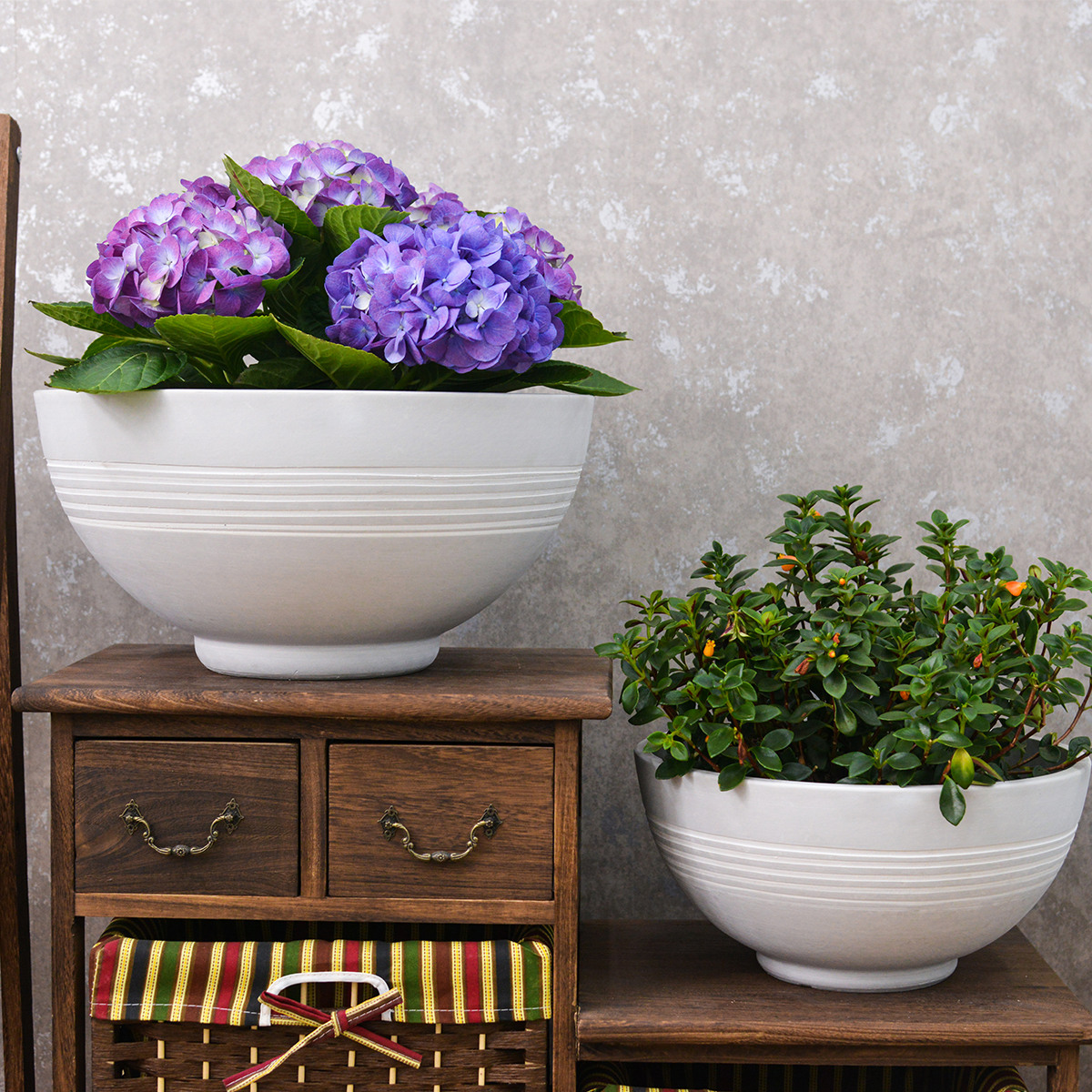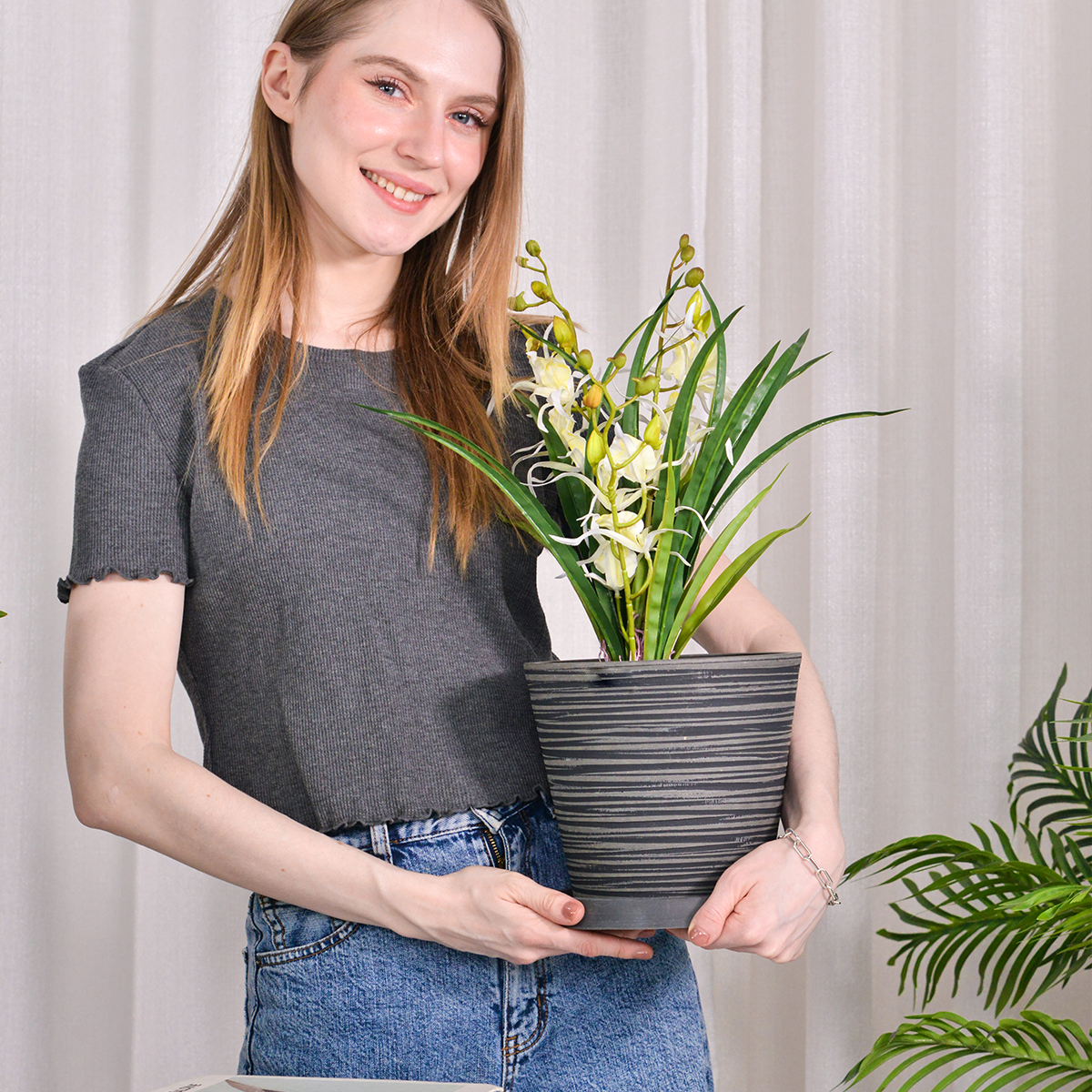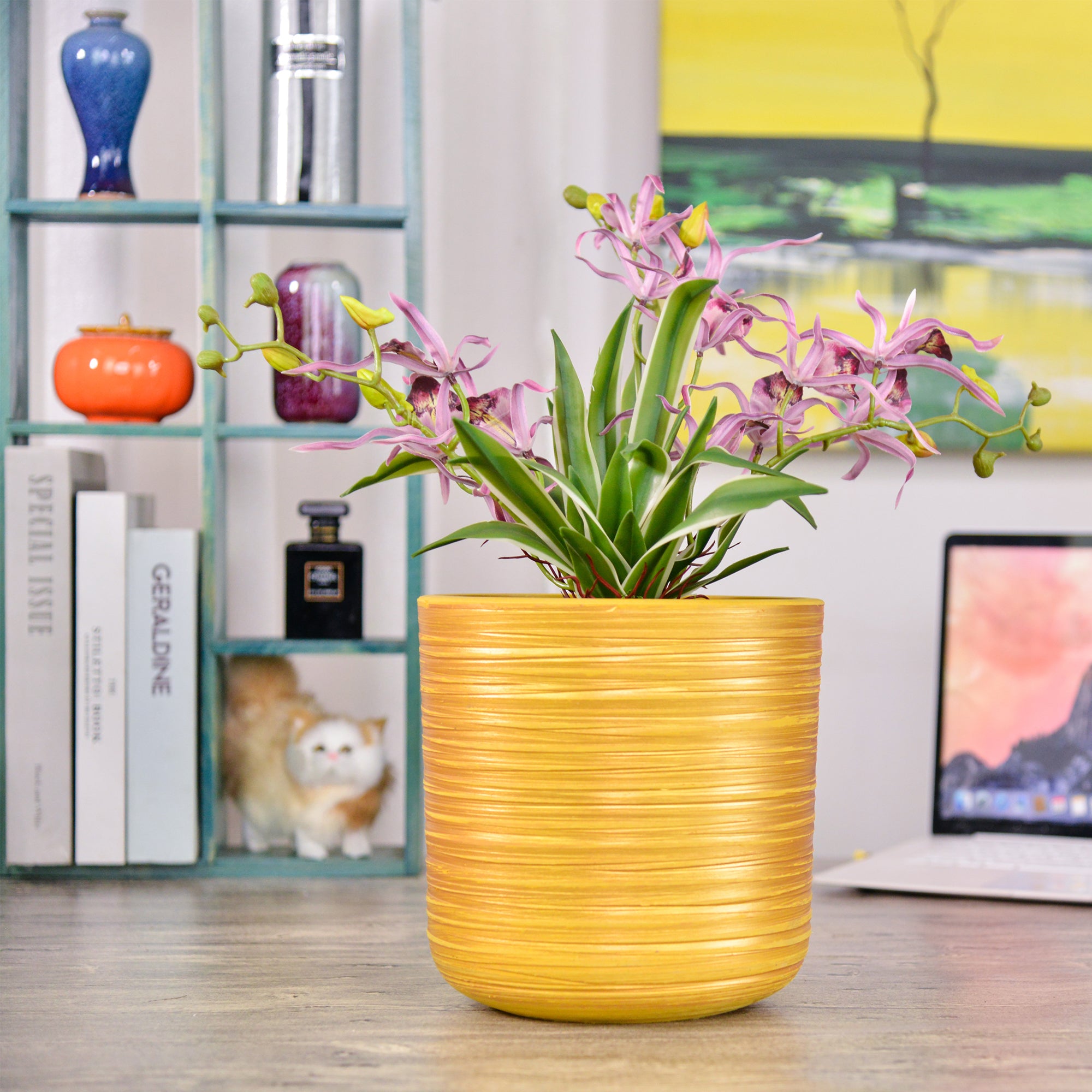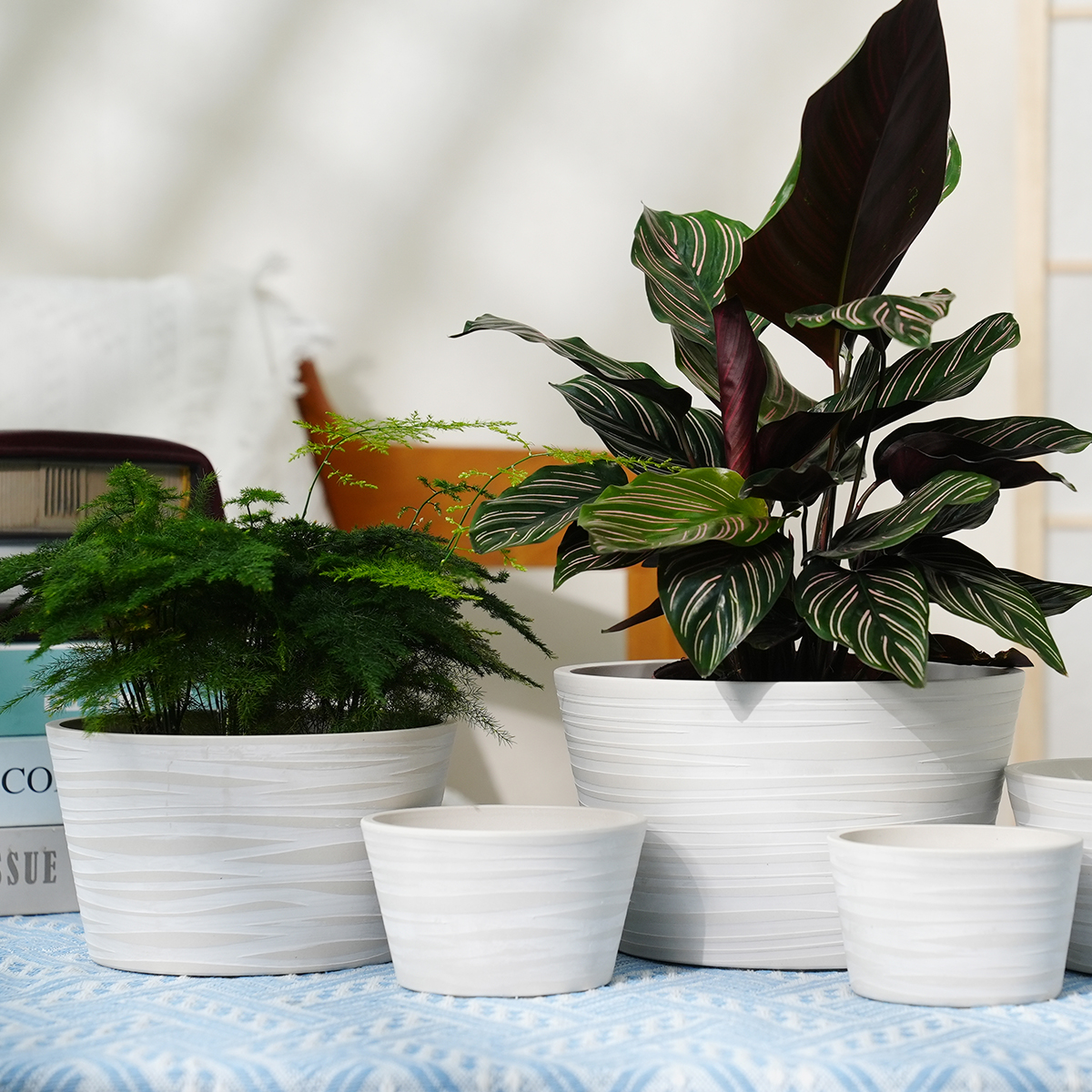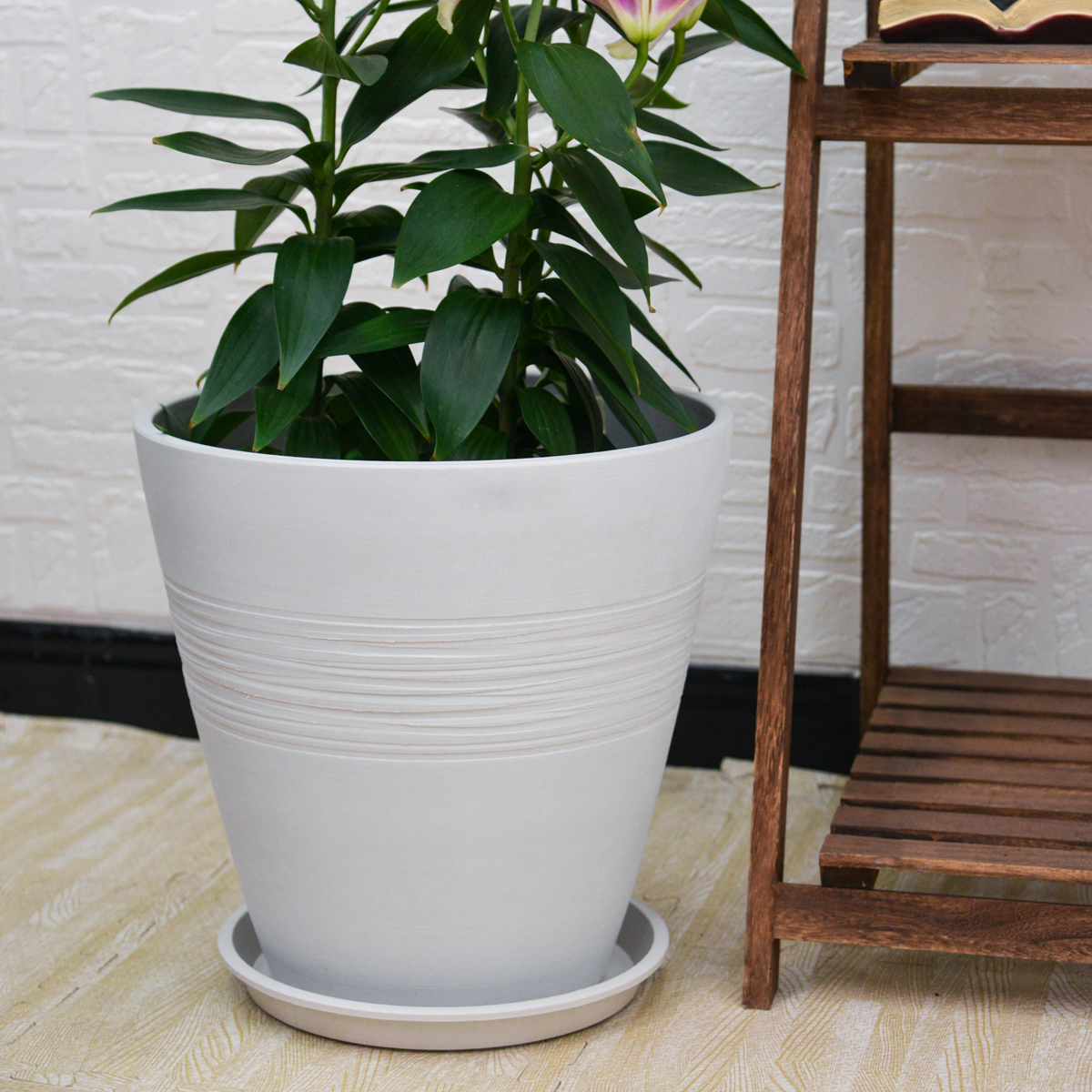Baby’s Breath in Pots: The Ultimate Guide to Growing Gypsophila Outdoors in Containers (Airy Blooms & Delicate Beauty!)
Want to capture the delicate beauty and airy charm of Baby’s Breath (Gypsophila paniculata) in your patio, balcony, or garden? Growing these ethereal flowers in containers is a wonderfully rewarding way to enjoy their cloud-like blooms and graceful presence, even in limited spaces. Celebrated for their masses of tiny, delicate white or pink flowers, their light and airy appearance, their long blooming season, their drought tolerance once established, and their adaptability to container gardening, Baby’s Breath is perfect for adding a touch of romantic, whimsical elegance and delicate texture to your outdoor living areas. This comprehensive guide will provide you with everything you need to know to grow Gypsophila paniculata successfully in outdoor pots, from selecting the best varieties and containers to mastering essential care techniques for a stunning and airy floral display.
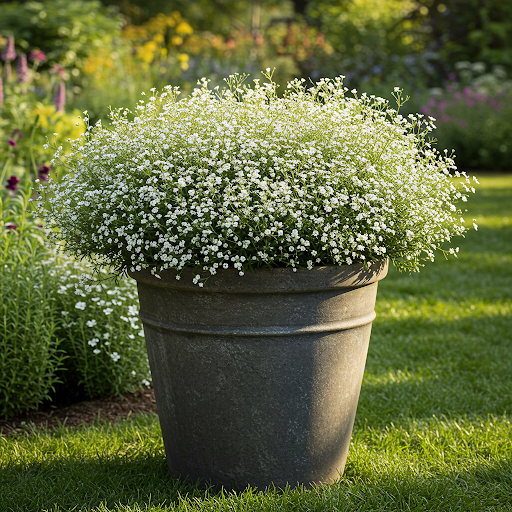
Baby’s Breath
What is Baby’s Breath?
Baby’s Breath, scientifically known as Gypsophila paniculata, is a herbaceous perennial flowering plant belonging to the Caryophyllaceae family (Pink or Carnation family). Native to Eurasia, it is widely cultivated as an ornamental plantaround the world, especially in temperate regions, prized for its masses of tiny, delicate flowers, airy and cloud-like appearance, long blooming season, use in bouquets and floral arrangements, and relative ease of cultivation. Baby’s Breath plants are characterized by their bushy, branching growth habit, their slender, gray-green foliage, and their profuse clusters of tiny, star-shaped flowers that are its defining feature. The flowers are typically small (less than 1/2 inch in diameter), delicate, and come in white or pale pink, creating a cloud-like or mist-like effect when the plant is in full bloom. Flowers can be single or double, depending on the variety, and bloom profusely from summer into fall. The plant itself has a relatively upright and spreading growth habit, typically reaching heights of 1-4 feet (30-120 cm) depending on the variety, making them well-suited for both garden beds, borders, and container culture. Baby’s Breath is known for its delicate and airy beauty, its association with innocence, purity, and everlasting love, its versatility in floral design, its drought tolerance once established, and its ability to bring a touch of romantic, whimsical elegance to any garden setting.
Is Baby’s Breath Good for Outdoor Pots?
Yes, Baby’s Breath is very well-suited for outdoor pots and container gardening, and is a delightful choice for adding airy beauty and delicate texture to patios, balconies, and other outdoor spaces. Container growing is an excellent way to manage its size, enjoy its blooms up close, and move it to optimal locations as needed. Its adaptability to container culture, manageable size in pots (especially with pruning), long blooming season, beautiful and airy flowers, and relative ease of care make it ideal for container cultivation. Growing Baby’s Breath in pots offers several advantages:
- Ideal for Patios and Balconies: Container gardening allows you to enjoy Baby’s Breath even if you have limited garden space, such as on balconies, patios, or decks. They bring a touch of delicate floral beauty to paved areas.
- Portability: Potted Baby’s Breath plants can be easily moved to optimal locations for sunlight, display, or shelter from extreme weather. You can rearrange them to create stunning focal points or seasonal displays. Bring them indoors to protect from heavy rain or extreme heat if needed.
- Controlled Soil Conditions: Container gardening allows you to provide the specific well-draining, slightly alkaline soil mix that Baby’s Breath prefers and control watering and fertilization more precisely, which is important for their health and flowering.
- Design Versatility: Baby’s Breath in pots can be used as standalone specimen plants in decorative pots, grouped together for a massed display of airy blooms, incorporated into mixed container arrangements with other annuals and perennials, or used in window boxes and as filler plants in larger containers. Their delicate texture and neutral colors make them versatile for various container gardening styles.
- Pest and Disease Management: Container growing can help reduce some soilborne pest and disease issues that can affect Baby’s Breath planted directly in the ground.
- Highlighting Airy Blooms: Container growing allows you to bring the delicate, cloud-like blooms up close for easy observation and enjoyment of their intricate beauty.
- Soil Drainage Preference: Baby’s Breath needs excellent drainage, which is easier to control in pots than in garden beds, especially in areas with heavy clay soil.
Ideal Growing Conditions for Baby’s Breath in Pots:
Types of Baby’s Breath for Pots: While Gypsophila paniculata is the main species, there are several cultivars and varieties that are particularly well-suited for container growing, often selected for more compact size or flower characteristics:
- ‘Compacta’ or ‘Baby Breath Compacta’: As the name suggests, these are dwarf or compact varieties that are specifically bred for smaller spaces and containers, typically reaching only 1-2 feet tall.
- ‘Viette’: A popular semi-dwarf variety that is more compact than standard Gypsophila paniculata, reaching about 2-3 feet tall, with double white flowers.
- ‘Festival White’ and ‘Festival Pink’: These are series of seed-grown varieties that are relatively compact and bloom in the first year from seed (annual or short-lived perennial), available in white and pink.
- ‘New Love’: A newer variety known for its improved disease resistance and compact habit, with double white flowers.
- Consider Flower Type and Color: Choose varieties based on your preferred flower type (single or double), flower color (white, pink, or blush), and bloom time (early, mid, late season) to suit your preferences and container size. Double-flowered varieties tend to last longer as cut flowers.
Light: Baby’s Breath thrives in full sun. They need at least 6-8 hours of direct sunlight per day, and ideally more, to bloom profusely and develop strong stems and abundant flowers. When grown in pots outdoors, position them in the sunniest location possible in your garden or patio. They will tolerate very light afternoon shade, but full sun is best for optimal flowering and overall plant health. Insufficient sunlight will result in fewer flowers and weaker stems.
Soil: Baby’s Breath needs very well-draining, slightly alkaline soil that is moderately fertile. Use a high-quality general-purpose potting mix. Amend potting mix generously with perlite, vermiculite, or coarse sand to significantly improve drainage and aeration, as excellent drainage is crucial for Baby’s Breath to prevent root rot. Baby’s Breath prefers a slightly alkaline soil pH, ideally around pH 7.0 to 8.0. You can add garden lime or dolomitic lime to the potting mix to raise the pH if needed, especially if using a peat-based mix which tends to be acidic. Avoid overly acidic or heavy, moisture-retentive soils.
Watering: Baby’s Breath prefers well-draining soil and is relatively drought-tolerant once established, especially in the ground. However, container-grown plants need regular watering, especially during the growing season and hot weather, but are still sensitive to overwatering. Water thoroughly when the top inch of soil feels slightly dry. Water deeply until water drains out of the drainage holes. Then, allow the topsoil to dry out somewhat between waterings. Avoid overwatering and consistently soggy soil, which is the most common mistake in Baby’s Breath care in containers and can lead to root rot. Also, avoid prolonged drought stress, especially for young plants and container plants, as this can weaken them. Baby’s Breath prefers a “cycle of drying out slightly and then thorough watering.” Watering frequency will depend on weather conditions, light levels, and pot size. Water more frequently during warmer, drier periods and less frequently during cooler, cloudier periods and in the dormant season (winter). Reduce watering in winter after foliage has died back, but don’t let the soil dry out completely.
Temperature: Baby’s Breath is a cool-season perennial and thrives in moderate temperatures. They prefer cooler temperatures during their active growing season, especially in spring and fall. In Singapore’s consistently warm climate, Baby’s Breath may perform best during the slightly cooler months or in a location with some afternoon shade during the hottest part of the year. They can tolerate some heat, but prolonged high temperatures can shorten their bloom season and stress the plants. They are cold-hardy perennials (to USDA zone 3 or 4), but potted plants may need some protection in very harsh winters in colder climates.
Humidity: Baby’s Breath prefers low to moderate humidity and good air circulation. High humidity can increase the risk of fungal diseases, especially if combined with poor air circulation and wet foliage. Singapore’s humidity can be challenging for Baby’s Breath. Ensure excellent air circulation around potted plants by spacing them adequately and choosing well-ventilated locations. Avoid overcrowding. Water at the base of the plants to keep foliage dry.
Fertilizer: Baby’s Breath is a light feeder and generally does not need heavy fertilization. Over-fertilizing can actually promote weak, leggy growth and fewer flowers. Fertilize sparingly, if at all, especially for established plants in the ground. For container-grown Baby’s Breath, you can apply a light application of a balanced liquid fertilizer (e.g., 10-10-10) diluted to half or quarter strength once or twice during the spring growing season to encourage healthy growth and flowering. Follow product label instructions for application rates, and err on the side of under-fertilizing rather than over-fertilizing. Avoid high-nitrogen fertilizers, which can promote leafy growth at the expense of flowers. You can also amend the potting mix with a small amount of bone meal at planting time to provide phosphorus, which can benefit flowering. Reduce or stop fertilizing after the main bloom season.
Choosing the Right Pots for Baby’s Breath:
Suitable Pot Types: Baby’s Breath needs pots that provide excellent drainage and aeration. Suitable pot types include:
- Terracotta Pots: Terracotta pots are an excellent choice for Baby’s Breath as they are porous, allowing for good aeration and drainage, and help prevent overwatering. Terracotta also provides good stability and a natural, rustic look that complements Baby’s Breath.
- Unglazed Ceramic Pots: Unglazed ceramic pots are also breathable like terracotta and offer good drainage.
- Resin Pots (Breathable Types): Some newer resin pots are designed to be more breathable than standard plastic, mimicking terracotta. Look for resin pots specifically marketed as “breathable” or “self-watering” (but still ensure good drainage).
- Plastic Pots (with Caution on Overwatering): Sturdy plastic pots can be used, especially for lightweight portability, but be extra careful not to overwater in plastic pots as they retain moisture more than terracotta. Ensure excellent drainage and use a very well-draining potting mix.
Drainage: Excellent drainage is absolutely essential for Baby’s Breath to prevent root rot. Ensure your chosen pot has drainage holes at the bottom. Avoid pots without drainage holes. Always use a drainage layer at the base of the pot (e.g., a layer of gravel or pot shards) beneath the potting mix to further enhance drainage. Elevating pots slightly on pot feet or bricks can also improve drainage and air circulation.
Pot Size: Choose pot sizes appropriate for the type and size of Baby’s Breath and your desired display. Baby’s Breath has a moderately deep taproot and needs room for root development and plant growth.
- Dwarf or Compact Varieties: Start with pots that are at least 8-10 inches in diameter and 8-10 inches deep. For mature dwarf varieties, pots that are 10-12 inches in diameter and depth are usually sufficient.
- Standard Gypsophila paniculata Varieties: Use pots that are at least 10-12 inches in diameter and depth for individual plants. For larger, bushier displays, you can use pots that are 12-16 inches in diameter and depth or larger, or group multiple plants in a larger container, spacing them adequately.
- Depth: Pots should be at least 8-10 inches deep, and ideally 10-12 inches deep or more for standard varieties, to accommodate the taproot and provide good soil volume.
Stability: Baby’s Breath plants can become quite bushy and tall, especially standard varieties, and may become slightly top-heavy, especially when in full bloom. Using moderately weighted pots (terracotta or ceramic) can provide good stability, especially in slightly windy locations. Wider pots are generally more stable than tall, narrow pots.
Color and Style: Choose pot colors and styles that complement the delicate white or pink flowers and airy form of your Baby’s Breath and your outdoor décor, and enhance their romantic, cottage-garden appearance. Natural terracotta, pastel shades, white, cream, or weathered wood-look pots can create a soft and timeless look, highlighting the delicate blooms and light texture. Consider the overall style of your patio or balcony and choose pots that harmonize with the surroundings and enhance the desired romantic, whimsical garden ambiance.
Essential Care Tips for Thriving Baby’s Breath in Outdoor Pots:
- Watering: “Water Thoroughly When Top Inch of Soil is Slightly Dry, Avoid Overwatering”. Water deeply when top inch of soil is slightly dry during growing season. Ensure excellent drainage. Allow soil to dry out somewhat between waterings. Avoid overwatering and soggy soil.
- Sunlight: Provide Full Sun (at least 6-8 Hours Daily for Best Bloom). Full sun is essential for abundant flowering and strong stems.
- Fertilizing: Fertilize Sparingly, Once or Twice in Spring with Balanced Liquid Fertilizer (Diluted). Fertilize lightly, if at all, especially for established plants. Over-fertilizing is detrimental.
- Deadheading (Encourage Reblooming and Tidy Appearance): Deadhead spent flowers regularly by snipping off faded blooms. This encourages the plant to produce more flowers and extends the blooming season. It also keeps the plant looking tidier.
- Pruning (After Bloom for Bushiness and Potential Rebloom): After the main bloom season (late summer or early fall), you can lightly prune back Baby’s Breath plants to encourage bushier growth and potentially a lighter rebloom later in the season. Cut back stems by about one-third to one-half.
- Staking (Taller Varieties if Needed): Taller varieties of Baby’s Breath, especially standard Gypsophila paniculata, may need staking to support their stems and prevent them from flopping over, especially when in full bloom or in windy locations. Use small stakes or plant supports as needed.
- Pest and Disease Control (Generally Low Maintenance): Baby’s Breath is generally relatively pest and disease-resistant, especially when grown in well-draining soil and with good air circulation. Monitor for aphids or spider mites occasionally. Treat with insecticidal soap or horticultural oil if needed. Root rot is the main disease concern, primarily caused by overwatering and poor drainage. Prevent root rot by ensuring excellent drainage and avoiding overwatering.
- Winter Care (Hardy Perennial, Minimal Winter Care): Baby’s Breath is a hardy perennial in many temperate climates (USDA zones 3-8 or 9). Potted Baby’s Breath in colder climates may benefit from some winter protection, such as moving pots to a sheltered location or mulching around the base to protect the roots from freezing. In milder climates like Singapore, no winter protection is needed. In colder climates, foliage will die back in winter and re-emerge in spring.
Popular Baby’s Breath Cultivars for Pots (and Flower Characteristics):
Baby’s Breath cultivars offer variations in plant size, flower type, and bloom time.
- Compact/Dwarf Varieties (Best for Pots): ‘Compacta’, ‘Baby Breath Compacta’, ‘Viette’, ‘Festival White’, ‘Festival Pink’, ‘New Love’.
- Double-Flowered Varieties (Longer Lasting Blooms): ‘Viette’, ‘Double Snowflake’, ‘Perfecta’, ‘Flamingo’ (pink double).
- Pink-Flowered Varieties (Soft Pink Hues): ‘Festival Pink’, ‘Pink Fairy’, ‘Rosy Veil’, ‘Flamingo’ (double pink).
- Early Blooming Varieties (for Extended Season): ‘Early Snow’, ‘Festival White’ (early blooming series).
- Disease-Resistant Varieties (Improved Hardiness): ‘New Love’ (known for better disease resistance).
In Summary:
Growing Baby’s Breath (Gypsophila paniculata) in outdoor pots is a wonderfully rewarding way to bring the delicate beauty and airy charm of these classic flowers to your patio, balcony, or garden. Their masses of tiny, cloud-like blooms, their graceful form, and their adaptability to containers make them a perfect choice for container gardeners of all levels, especially those seeking romantic, low-maintenance, and visually stunning flowering plants for outdoor spaces. By providing full sun, very well-draining, slightly alkaline potting mix in pots with excellent drainage, watering appropriately (allowing soil to dry slightly between waterings), fertilizing sparingly, and deadheading spent blooms, you can easily cultivate thriving and spectacularly blooming Baby’s Breath plants in pots and enjoy their ethereal beauty and delicate elegance in your outdoor living areas for months on end.

Baby’s Breath
For more detailed botanical information and to explore the diverse world of Baby’s Breath, you can visit the Wikipedia page on Gypsophila paniculata.
Important Note: The key to success with Baby’s Breath in pots is providing excellent drainage, full sun, and avoiding overwatering and over-fertilizing. With proper care and a sunny location, your potted Baby’s Breath will reward you with months of delicate, airy blooms and romantic garden charm in your outdoor spaces!**
11TH
By greenship|2024-08-13T02:50:25+00:00August 13, 2024|Categories: Hand-carving Series|
KC3-09k
By greenship|2024-08-16T06:24:36+00:00August 16, 2024|Categories: Hand-carving Series|
K2-11T
By greenship|2024-08-13T04:21:25+00:00August 13, 2024|Categories: Hand-carving Series|
Modern Plant Pots丨Planter for Indoor Plants,8 inch or 10 inch Plant Pots with Drainage Hole,Decorative Flower Pots
By greenship-seo|2025-04-10T08:32:55+00:00January 7, 2025|Categories: Hand-carving Series|Tags: Decorative Flower Pots, Self-Watering Pots|
HS
By greenship|2024-08-13T06:45:17+00:00August 13, 2024|Categories: Hand-carving Series|
KC2-GS
By greenship|2024-08-16T06:30:21+00:00August 16, 2024|Categories: Hand-carving Series|


